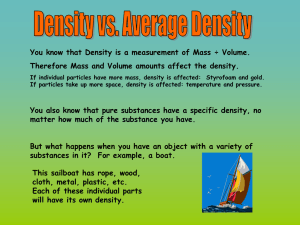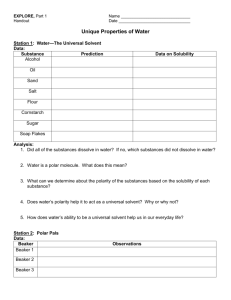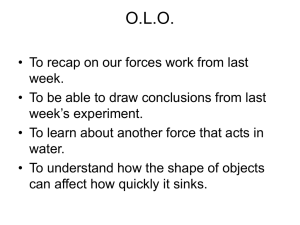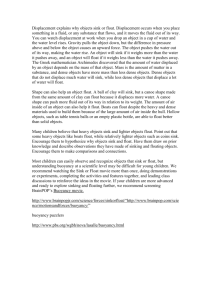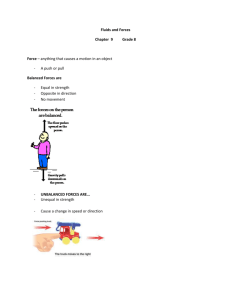Buoyancy
advertisement
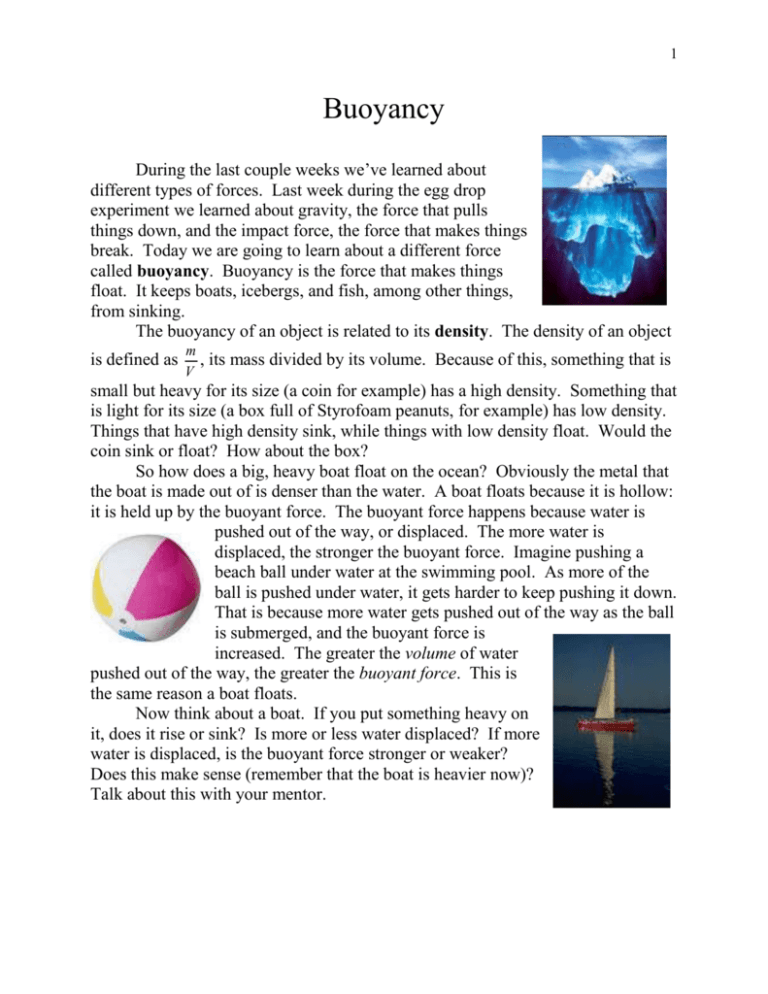
1 Buoyancy During the last couple weeks we’ve learned about different types of forces. Last week during the egg drop experiment we learned about gravity, the force that pulls things down, and the impact force, the force that makes things break. Today we are going to learn about a different force called buoyancy. Buoyancy is the force that makes things float. It keeps boats, icebergs, and fish, among other things, from sinking. The buoyancy of an object is related to its density. The density of an object is defined as m , its mass divided by its volume. Because of this, something that is V small but heavy for its size (a coin for example) has a high density. Something that is light for its size (a box full of Styrofoam peanuts, for example) has low density. Things that have high density sink, while things with low density float. Would the coin sink or float? How about the box? So how does a big, heavy boat float on the ocean? Obviously the metal that the boat is made out of is denser than the water. A boat floats because it is hollow: it is held up by the buoyant force. The buoyant force happens because water is pushed out of the way, or displaced. The more water is displaced, the stronger the buoyant force. Imagine pushing a beach ball under water at the swimming pool. As more of the ball is pushed under water, it gets harder to keep pushing it down. That is because more water gets pushed out of the way as the ball is submerged, and the buoyant force is increased. The greater the volume of water pushed out of the way, the greater the buoyant force. This is the same reason a boat floats. Now think about a boat. If you put something heavy on it, does it rise or sink? Is more or less water displaced? If more water is displaced, is the buoyant force stronger or weaker? Does this make sense (remember that the boat is heavier now)? Talk about this with your mentor. 2 Experiment 1: Divers Materials: dropper paper clips water bottle scotch tape Procedure: 1. Get a dropper, and cut it off about ¾ of an inch below the bulb. 2. Tape a big paper clip to the dropper. Hang three more big paper clips from the first one. This is your “diver.” 3. Fill your water bottle with water and put in the diver in. Does it float? If not, remove one of the paper clips. 4. Screw the cap onto the water bottle tightly, and squeeze hard. Does the diver drop to the bottom of the bottle? If not, take it out of the bottle and add more paper clips. Look closely at the diver when you squeeze on the bottle. Do you see water going into the dropper? That happens because the pressure caused by your squeezing compresses the air in the dropper. When the air is compressed, what happens to the weight of the diver? What happens to its density? Why does it sink? Feel free to take your diver home and show your family. Experiment 2: Foil Boats Now you will build a boat of your own out of aluminum foil. Remember what we learned about the buoyant force. The greater the volume of the boat, the more weight it can hold. Materials: one 6 inch x 6 inch aluminum square, pennies, water tub (to be shared) Procedure: 1. Fold your piece of aluminum foil into a boat. Take your time and try to make it so it will hold a lot of weight. 2. Float it on the tub of water, and add 3 large washers. 3. The boats hold a lot of weight, so cautiously add large amounts of pennies (count em!) until it seems “close.” Then add pennies one by one (If your boat sinks, you can just dump out the water and some pennies and keep going!). Try to spread the weight out along the bottom of the boat. Keep adding pennies until the boat sinks. Whoever adds the most pennies wins! 3 Questions 1. Why does a rock sink but a piece of wood floats? 2. Why does aluminum foil sink when it is crushed, but floats if it is shaped like a boat? 3. Why did your boat sink when you added too many washers? 4. Whose boat worked best? Why was it the best? Bonus Question: The USS Nimitz Aircraft Carrier displaces more than 3 million cubic feet of water when sunk. How much can the USS Nimitz weigh before she sinks? How many small cars could she hold? (There are approximately 60 pounds per cubic foot of water, and 2000 pounds in a ton. The average small car weighs about 1 ton.)


